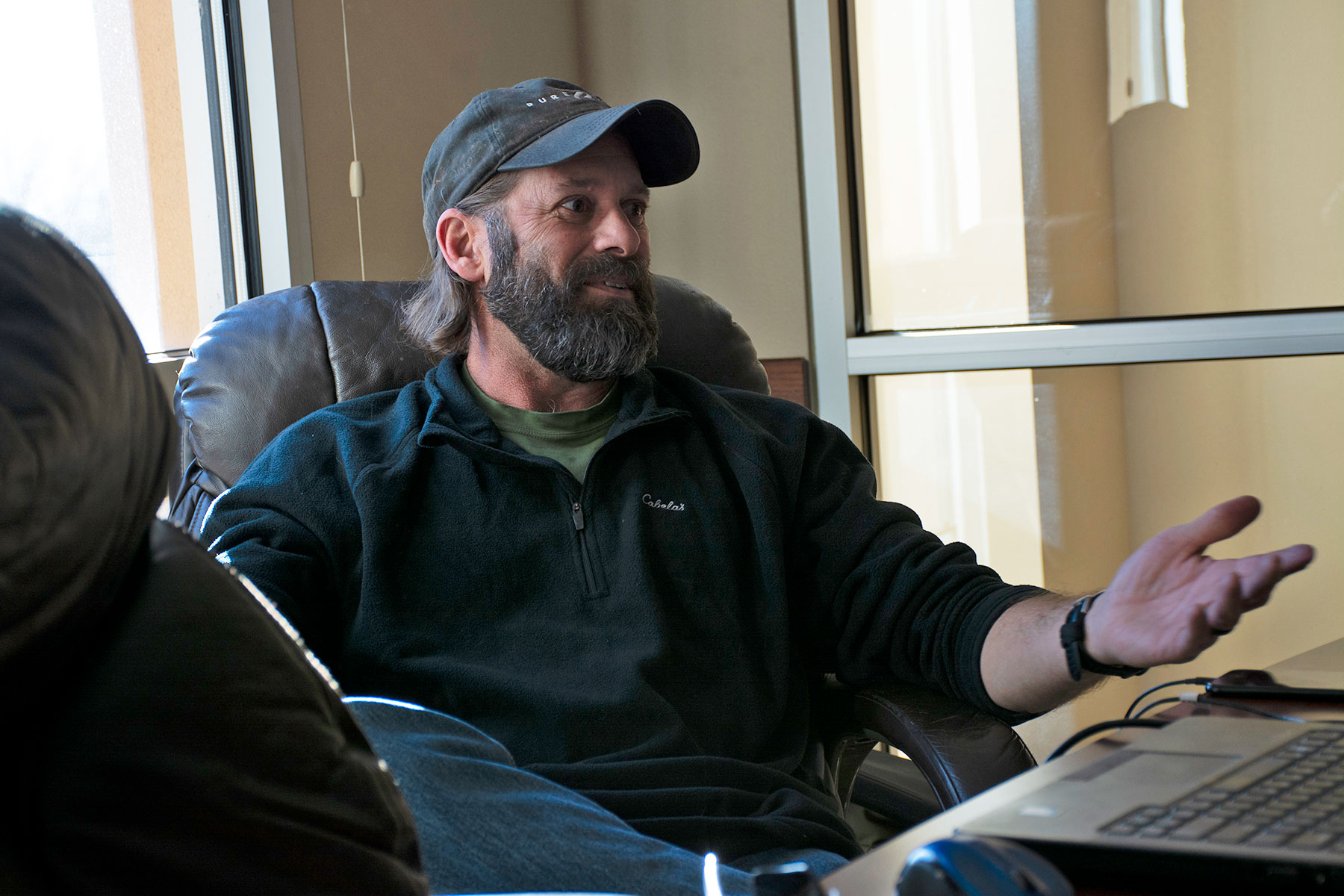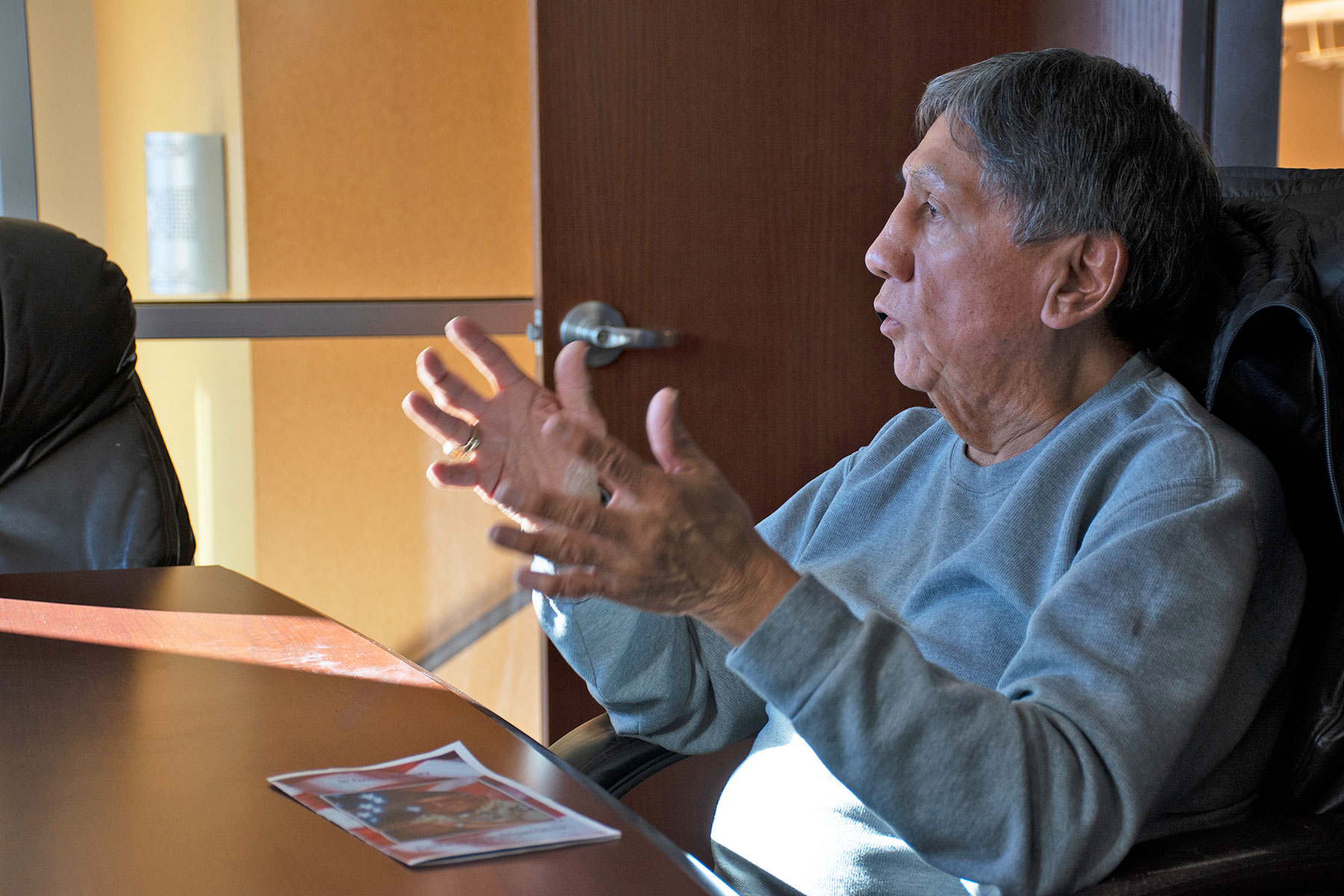Veterans Service Office advocates for veterans and their families
Southern Ute veteran, Rod Grove met with La Plata County Veterans Service Officer (CVSO) Greg Dotson on Wednesday, Jan. 5 to discuss how tribal member veterans and families of veterans can get assistance with Veterans benefits.
The La Plata County Veterans Service Officer (CVSO) can be a great resource in locating vital military records and assist with accessing Veteran benefits.
“I want to help the membership,” said Grove, a Vietnam combat veteran himself. “When a veteran passes away his records and paperwork goes with him.” Often when a veteran has passed away, only he or she knows where their own military records are stored and all pertinent info of his or her service record may be lost upon their death.
Greg Dotson, CVSO will be at the Ignacio Community Library on the first Wednesday of each month to assist veterans and families of veterans. The CVSO office hours are from 9 a.m. to 5 p.m. at the Ignacio Community Library, in Ignacio. These office times have been set up for veterans to meet with the County Veterans Service Officer and learn more about their Veterans benefits. Appointments can be made by calling 970-759-0117, but walk-ins are also welcome.
Dotson is a Navy veteran who served in Iraq and Iran from 1989-2017 and has been with the La Plata County Service office for 18 months and is based out of Durango, Colo. Dotson provides services to veterans in La Plata County and can assist with additional resources available to veterans or families of deceased veterans.
The main objective of the Veterans Service Office is to provide prevention, protection, advocacy and support services to veterans and their families so they can maximize their quality of life, well-being, and potential. Every veteran is encouraged to contact the CVSO to find out more about their Veteran Affairs (VA) benefits.
Family members of a veteran who has passed away can find that filling out the paperwork for Veteran Benefits can be intimidating. Some veterans themselves upon discharge did not want anything to do with the military or the VA, but may now need assistance.
Speaking of health care and requesting services, “If you think you may need health care, get documents – we can fill out the forms and see what the Veterans Affairs says. It’s always better to fill out the forms sooner than later once discharged from the service,” Dotson said.
Headstones, markers and medallions are also provided by the VA. Find out how to apply for a headstone, grave or niche marker, or medallion to honor a Veteran, service member, or eligible family member at www.va.gov/burials-memorials/memorial/items/headstones-markers-medallions/.
In most cases, you can apply for one of these memorial items if you’re representing the deceased veteran, service member, or family member in any of the below relationships or professional roles.
One of these must describe your relationship to the deceased:
- A family member, or
- A personal representative (someone who officially represents the deceased), or
- A representative of an accredited Veterans Service Organization, or
- An employee of a state or local government whose official responsibilities include serving veterans, or
- Any person who’s legally responsible for making arrangements for unclaimed remains or for details having to do with the deceased’s interment or memorialization, or
- Any individual representing the deceased, if the veteran’s service ended before April 6, 1917.
Hood Mortuary in Durango and Family Craft Memorial in Durango can also assist family members in obtaining the paperwork for a military headstone for a deceased veteran. Info for Family Craft can be located online at www.familycraftmemorials.com/ or by calling their office at 970-247-4571, and Hood Mortuary information can be located online at hoodmortuary.com/ or calling their office at 907-247-2312.
Along with Headstone the VA can also assist with attaining burial flags – a United States flag to drape on a casket (or coffin) or place with an urn in honor of the military service of a veteran or reservist and Presidential Memorial Certificates, a (PMC) is an engraved paper certificate signed by the current president to honor the military service of a veteran or reservist.
Brief history of headstones for fallen soldiers
On February 22, 1867, Congress passed an act to “establish and to protect national cemeteries,” a section of which called on the secretary of war to “cause each grave to be marked with a small headstone or block.” Some proposals, called for metal markers, either with full names or simply numbers, advocating marble or granite headstones marked with the names of the decedents.
On March 3, 1873, Congress appropriated a million dollars to replace the headboards with markers of “durable stone” and allowed the secretary of war to determine “the size and model for such headstones, and the standards of quality and color of the stone to be used.” The secretary specified white marble or granite; these stone slabs were cut to four inches thick, ten inches wide. The face would display a sunken shield carrying the number of the grave, rank, name of soldier, and the name of home state. For unknown soldiers, a block six inches square by thirty inches long would bear only the grave number.
Through legislation of February 3, 1879, “An Act authorizing the Secretary of War to erect headstones over the graves of Union Soldiers who have been interred in private, village, or city cemeteries.” This legislation, later revised to include all military veterans, started the headstone application program that continues today.




